
Certain businesses have a natural sales flow, receiving leads from marketing campaigns or client referrals. These prospects are nurtured through conversations and eventually become paying customers. However, many businesses struggle with a disorganized sales process because they overlook the importance of the sales pipeline stages.
As a matter of fact, 54% of sales professionals say selling is harder this year compared to previous years.
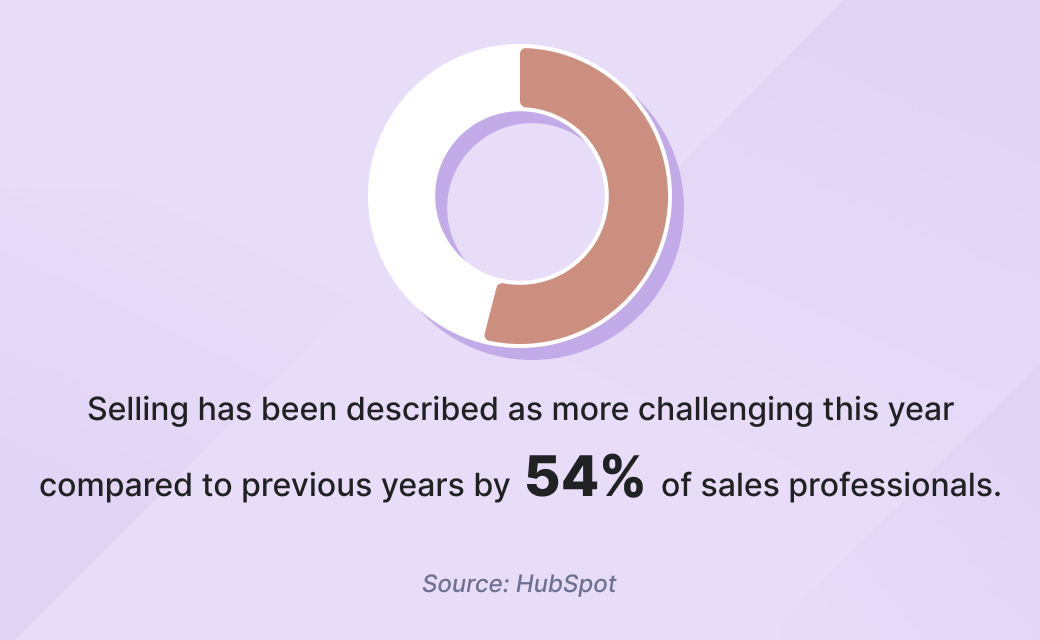
To address this challenge, you should build a sales pipeline. This insight becomes instrumental in strategically growing your company’s sales. Sales managers can leverage the stages of the sales pipeline to establish a structured and disciplined approach to sales.
This article will provide the ultimate guide to understanding the sales pipeline and its various stages.
What is a sales pipeline?
A sales pipeline refers to a structured and visual representation of the different stages in the sales process. It’s like a roadmap showing how a potential customer goes from initial contact to purchase.
Think of it as a series of interconnected steps, each representing a specific phase in the sales cycle. A sales pipeline aims to help sales teams track and manage their interactions with prospects.
Sales pipeline vs. sales funnel
The sales pipeline and sales funnel are intertwined, as leads move through the sales stages within the broader context of the sales funnel.
The pipeline represents the steps and actions taken to move individual leads closer to a sale, while the sales funnel provides an overall view of lead flow and conversion rates. Both are valuable tools for you to manage and improve your sales and marketing efforts.
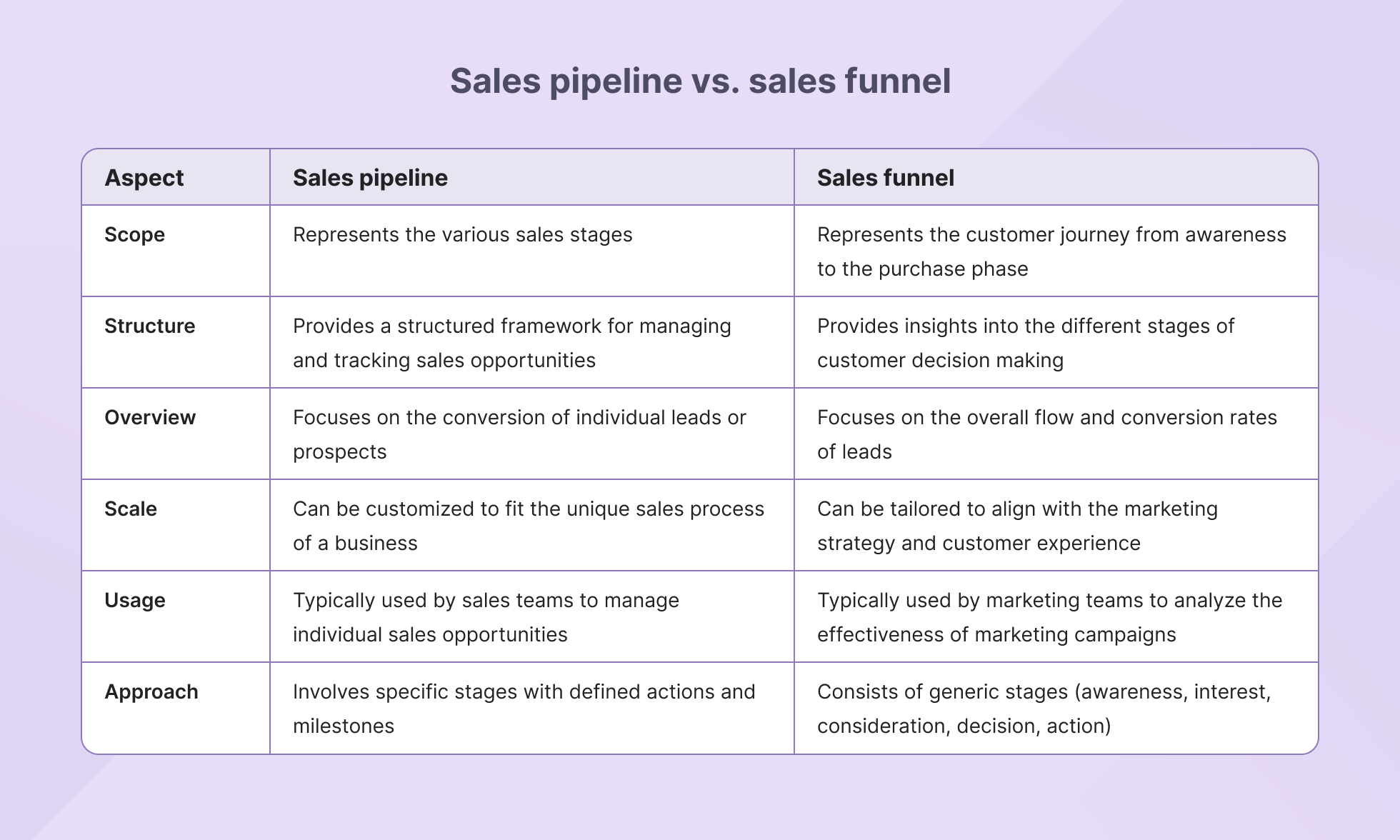
The importance of a sales pipeline
A well-structured sales pipeline has two main functions — measurement and action. It’s like looking both backward and forward. A clear pipeline allows sales reps to prioritize their efforts and learn how to allocate resources to the right pipeline stage.
By perfecting your sales pipeline, you can unlock several benefits to help your team close more deals.
- Enhanced forecasting: A well-organized sales pipeline provides accurate data for better sales forecasting and planning.
- Increased efficiency: Perfecting your business pipeline streamlines the process, reduces bottlenecks, and improves efficiency.
- Collaborative teamwork: A well-defined sales pipeline fosters collaboration and communication among team members.
- Increased conversion rates: By analyzing the pipeline data, you can identify areas for improvement to align with customer engagement models.
- Real-time performance tracking: With a clear pipeline, sales managers can track performance metrics in real time.
The stages of the sales pipeline
The main stages of the pipeline are a structured framework that guides the sales process from prospecting to closing deals, ensuring that no opportunity is overlooked.
Let’s explore the seven common sales pipeline stages. The sales team can easily customize these to fit the sales process applied.
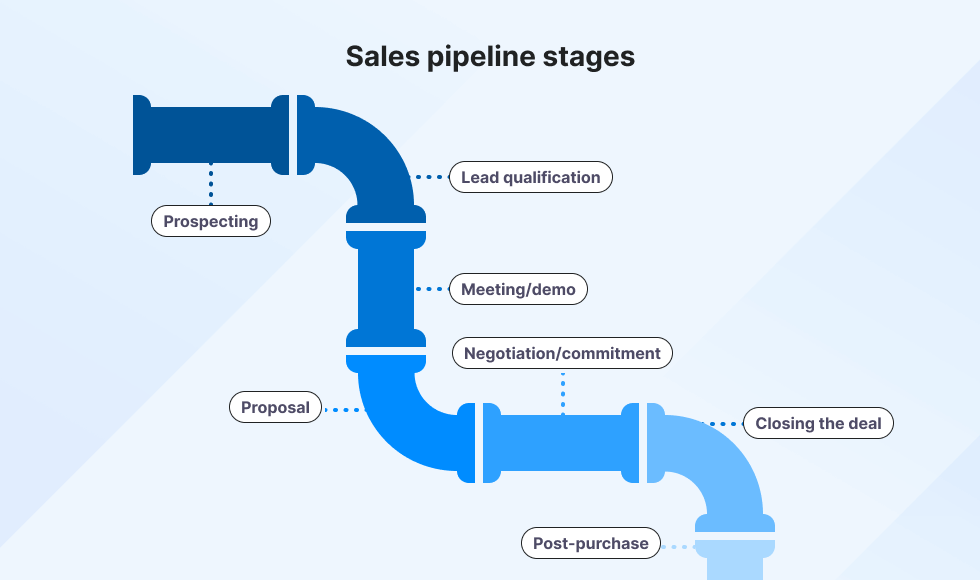
1. Prospecting
Prospecting is the initial stage of the sales pipeline, wherein salespeople actively search for potential customers and opportunities. They identify leads through cold outreach, networking, or online research.
🚨 One of the main challenges in the prospecting stage is finding high-quality leads among a large pool of potential prospects. This can be time-consuming and requires effective lead-generation strategies.
🎯 By focusing on quality rather than quantity, sales teams can increase their likelihood of engaging with valuable prospects.
Sahil Kakkar, CEO at RankWatch.com, explains why his company prioritizes this initial stage:
“At RankWatch, we place immense value on the prospecting stage of the sales pipeline. This initial phase is not just about identifying potential leads; it’s about laying the groundwork for meaningful relationships. Our approach is to blend traditional prospecting techniques with the insights provided by our SEO tools, enabling us to not only find businesses actively seeking solutions we offer but also to understand their pain points deeply. This dual focus ensures that when we reach out, our communication is personalized and relevant.”
2. Lead qualification
Lead qualification is one of the pipeline stages wherein salespeople check potential leads to see if they meet specific criteria. This evaluation helps determine if the leads are ready and suitable for the sales process.
🚨 The main challenge in lead qualification is determining if a lead has the potential to become a paying customer.
🎯 You should develop lead-scoring models that assign values to different criteria. A good example is the lead-scoring model based on behavior, which evaluates leads based on their actions indicating purchase intent. Thorough research on leads and the use of qualification frameworks can also help.
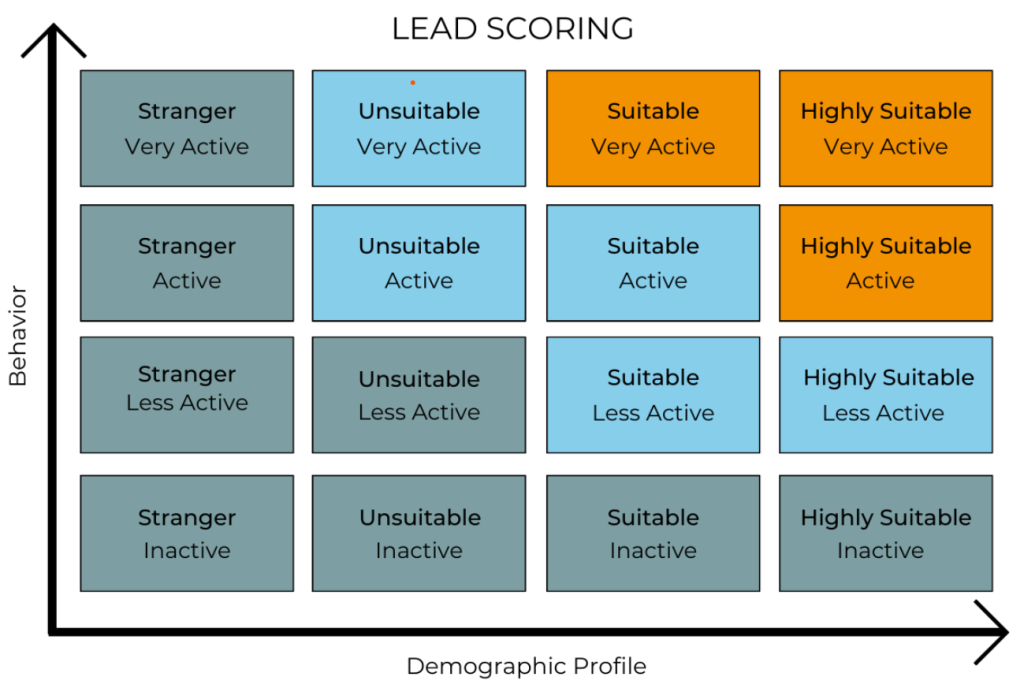
Image source: blog.move-mktg.com
Laia Quintana, head of marketing and sales at TeamUp, provides insights into this crucial aspect of the sales journey:
“In lead qualification, it’s not just about identifying if a lead fits into our ideal customer profile, but also about understanding their readiness to adopt our solution. We need to ascertain their pain points, their current solutions, and how our product can provide superior value. It’s a delicate balance between assessing the lead’s potential and understanding their unique needs. This stage is less about selling and more about listening and learning. It’s about building a relationship based on trust and mutual benefit.”
3. Meeting/demo
Sales professionals engage with qualified leads in the meeting or demo stage to showcase the product or service. They conduct meetings or demonstrations to address any questions or concerns. This stage aims to provide a deeper understanding of the offering.
🚨 The main challenges in this stage are conveying the value proposition and addressing the leads’ specific needs.
🎯 To ensure the success of such demos, it’s crucial to maintain a two-way conversation that addresses prospects’ questions and concerns. Stefan Chekanov, CEO at Brosix, elaborates:
“Having incorporated free demonstrations in our sales pipeline, we understand the value they provide in giving hot prospects tangible evidence of the benefits of our product. Although demos take time, they give our prospects the chance to experience the product first-hand before committing to it. It also boosts their knowledge of and confidence in the product, getting a crystal clear picture of exactly what they are getting. For a demo to be successful, ensure it is a two-way conversation that answers prospects’ questions and addresses any of their concerns.”
4. Proposal
Sales professionals present a formal proposal that outlines the offering’s details, such as pricing, terms, and conditions. The goal is to convince the lead to purchase and move forward in the sales process.
🚨 Crafting a compelling and tailored proposal that addresses the client’s specific needs can be demanding. Understanding the client’s pain points and expectations requires thorough research.
🎯 Providing flexible or personalized options can increase the chances of a successful proposal.
5. Negotiation/commitment
Effective negotiation in sales is highly valued and should be conducted with mutual respect and fairness. Both parties should engage in the process with genuine commitment. They should work towards a mutually beneficial and well-balanced agreement.
🚨 Addressing customer objections, negotiating terms, and ensuring a mutually beneficial agreement are the challenges at this sales pipeline stage. Therefore, it demands strong communication, problem-solving, and relationship-building skills.
🎯 Both the buyer and the seller should explore alternative options to meet their needs and interests. Thinking outside the box can unlock opportunities for win-win outcomes.
6. Closing the deal
At the closing stage, the sales agent and the prospective client are ready to complete the deal. This involves signing a contract outlining the agreed-upon terms and obligations.
🚨 However, if the prospective client rejects the sales agent’s proposal, it’s important not to lose hope. The client may come back later and reopen negotiations. In such situations, it’s crucial not to sever ties completely. Instead, the agent should continue nurturing the relationship by guiding the prospect back to the initial stage of the sales pipeline.
🎯 Simon Bacher, CEO at Ling, emphasizes the sealing of agreements through meticulous discussions and personalized interactions:
“The deal-closing stage is critical in the sales pipeline because you don’t want the buyer to back out at the last minute. At Ling, we cater to B2B clients like ed-tech companies and marketing agencies seeking language learning lessons. We seal the deal with a licensing agreement and ensure the customer understands every item through a face-to-face meeting, follow-up email, or video call. This ensures we are on the same page regarding expectations, deliverables, and responsibilities, nurturing relationships and refining our approach through feedback.”
7. Post-purchase
The last stage is focused on keeping existing customers and ensuring their satisfaction. It involves building and maintaining strong customer relationships.
🚨 Customers may experience post-purchase doubts, leading to dissatisfaction and potential returns or cancellations.
🎯 Acquiring new clients is more costly than retaining existing ones. You should engage in upselling and cross-selling opportunities with your newly established customers. Remember that providing exceptional customer service and personalized experiences helps build long-term relationships.
Implement proactive communication strategies. Seek feedback and conduct customer satisfaction surveys to identify areas for improvement.
B2B sales pipeline
The seven sales pipeline stages above can be applied both to B2C (business-to-consumer) and B2B (business-to-business) contexts. However, there are certain aspects to consider when applying them to a B2B context.
Navigating the B2B sales pipeline stages involves a refined understanding of the unique dynamic of B2B interactions.
- Unlike B2C transactions, B2B services often require building consensus among various departments and senior management.
- The timeline for B2B sales tends to stretch longer, requiring a patient and strategic approach.
Prioritize prospects that align closely with your ideal customer profile. Dedicate resources and time to cultivate customer relationships.
Sales pipeline example
Let’s explore how the sales pipeline stages might operate in the media production industry.
- Lead generation or prospecting: You generate leads through targeted email campaigns, running social media ad campaigns on Instagram or Facebook, or leveraging professional networking on LinkedIn.
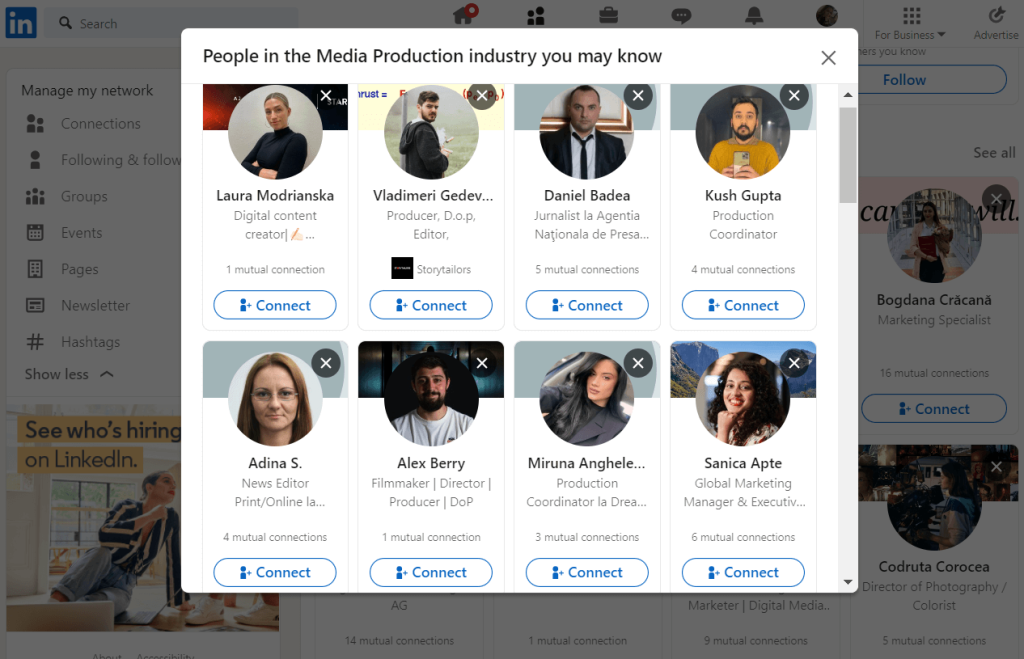
- Lead qualifying: You assess the leads based on criteria such as industry, content needs, and budget. Leads that align with your production capabilities are considered qualified.
- Contacting & lead nurturing: Your sales team reaches out to schedule an initial consultation. During the consultation, they discuss the client’s video content objectives and showcase examples of past work relevant to their needs.
- Proposal & negotiation: Once your team understands the client’s video content needs, they draft a proposal delineating the project scope, pricing options, and production schedule. Negotiations may center on aspects like video duration, production aesthetics, or extra services like scriptwriting or animation.
- Closing the sale: After successful negotiations, the client agrees to move forward with your media production services. Payment terms are established, and project kickoff activities begin.
- Post-sale follow-up: The sale marks the beginning of a collaborative relationship. Your production team provides ongoing support, regular project updates, and strategic guidance to ensure the successful execution of the video content. This post-sale lays the groundwork for potential future projects or referrals.
External sales pipeline metrics
In addition to the sales pipeline stages, you should consider external metrics to better understand their sales performance. These metrics provide valuable insights into certain factors outside the pipeline that can impact sales.
- Size of the deal: Segment prospective clients as per the budget and personalize every pitch you make.
- Closing probability: Evaluate the chances of successfully completing a sale for each client. Use extra factors to increase the likelihood of finalizing the deal.
- Pipeline value: Focus on high-value deals. Allocate resources accordingly to maximize your chances of closing those opportunities.
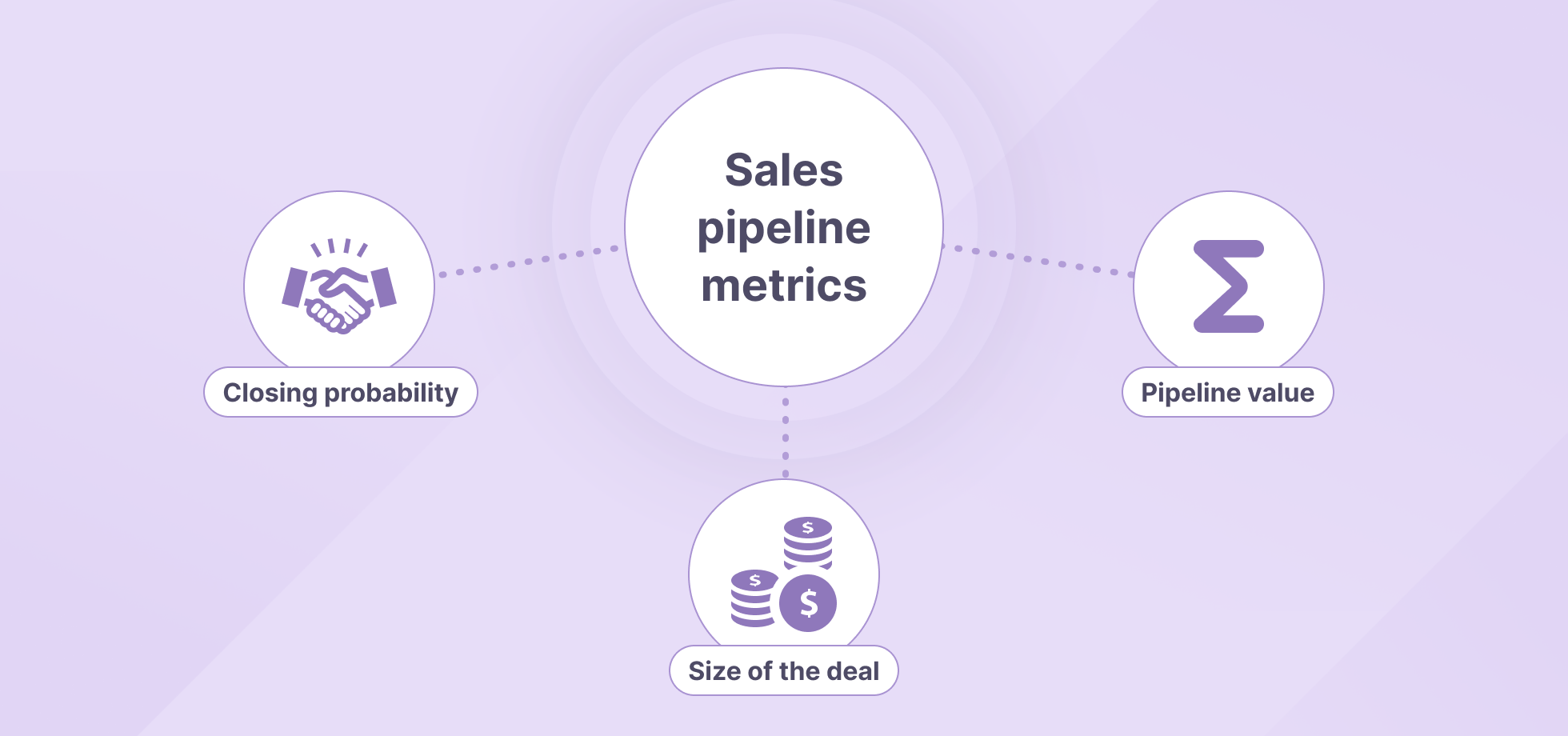
The five steps to building a sales pipeline
A strong sales pipeline and a robust lead management framework lay the foundation for your sales team’s success.
However, don’t rush into creating a sales pipeline without considering what works best for your business and the customer base. What may be effective for other companies might not suit your needs.
Discover effective strategies for creating your own sales pipeline with these valuable tips.
1. Prospect your buyers
The first step in building your sales pipeline is identifying your target audience, ensuring that you focus your efforts on the right prospects. Understanding their preferences will help you establish the most effective way to make initial contact with them.
2. Delegate sales activities amongst your team
Optimize productivity by assigning specific sales activities to individual team members. Distribute responsibilities such as prospecting, lead nurturing, and closing based on the strengths and expertise of each team member.
Doing so ensures that every team member can focus on their core tasks. This will result in a more informed sales pipeline based on individual experience in specific pipeline stages.
3. Determine the optimal length of your sales cycle
Evaluate historical data and analyze your sales cycle to determine its average duration. Understanding the time prospects progress through each pipeline stage is vital for accurate forecasting and resource allocation. It also helps identify potential bottlenecks or areas where improvements can be made to expedite the sales cycle.
4. Find the right size for your pipeline
Strike a balance between maintaining an adequate number of leads in your pipeline and avoiding overload. Consider your sales goals, conversion rates, and historical data to determine the ideal size of your pipeline. Sustaining a healthy number of leads and opportunities ensures a steady flow of potential customers.
5. Define the key indicators
To ensure the health of your sales pipeline, define and monitor the relevant metrics. As sales activities progress, these metrics can provide valuable insights. Set clear sales targets. Track metrics like the average deal value, win rate, and conversion rate.
Six tips for managing the sales pipeline
Consider implementing these sales pipeline management best practices to drive consistent results.
1. Feed your pipeline regularly
Focus on prospecting alongside closing deals. Here are two ways to keep your pipeline full:
- Take proactive steps to engage potential customers. Reach out to them through targeted emails or sales calls. By actively initiating conversations, you can generate interest and cultivate new leads.
- Harness the power of referrals and brand advocates. Leverage your existing relationships with satisfied customers. Their recommendations can carry significant weight in your efforts to expand your reach.
2. Maintain regular communication with prospects
Ensure that you allocate a specific time slot for the conversation to ensure a productive and focused discussion.
- Make your follow-up messages stand out by personalizing them. Reference details from previous conversations to show that you value their input. This demonstrates professionalism and attention to detail throughout the customer journey.
- Ensure that you allocate a specific time slot for the conversation to ensure a productive and focused discussion. That way, you can identify customer touchpoints, strengthen relationships, and move prospects closer to purchasing.
3. Remove non-responsive prospects from your radar
Like any pipe, a clogged sales pipeline can hinder progress and impede sales success.
- Remove leads that show no signs of progressing through the pipeline.
- Pay attention to leads that have spent more time in the sales cycle than average. Reach out to give them a gentle nudge. However, cutting them loose is best if they fail to respond or show no further interest. Doing so can free up your valuable time.
4. Make pipeline reviews a priority
Schedule regular sessions with your sales team to discuss the performance and progress of the sales pipeline.
- Analyze existing deals, identify challenges or bottlenecks, and share best practices and strategies. Use your sales pipeline CRM (customer relationship management) data to gain valuable insights into where deals stall or excel.
- By prioritizing pipeline reviews, you ensure that your sales efforts align with your goals.
5. Avoid common mistakes
To manage your sales pipeline effectively, it’s important to avoid common mistakes that can hinder your progress. Here are some straightforward tips to help you avoid these pitfalls:
- Investigate why deals are lost
- Don’t allocate excessive time to low-value prospects
- Provide comprehensive sales training
- Regularly update sales materials
- Stay up to date with the latest customer onboarding trends
- Choose reliable pipeline management software
- Prioritize automation and integrations
6. Measure pipeline efficiency
A successful sales pipeline yields high conversion rates, fast sales velocity, and a short sales cycle.
Modern CRM analytics tools make tracking various aspects of your sales performance easy. However, collecting data alone is not enough. Monitor key sales metrics over time.
Here are some essential sales performance metrics that you should track:
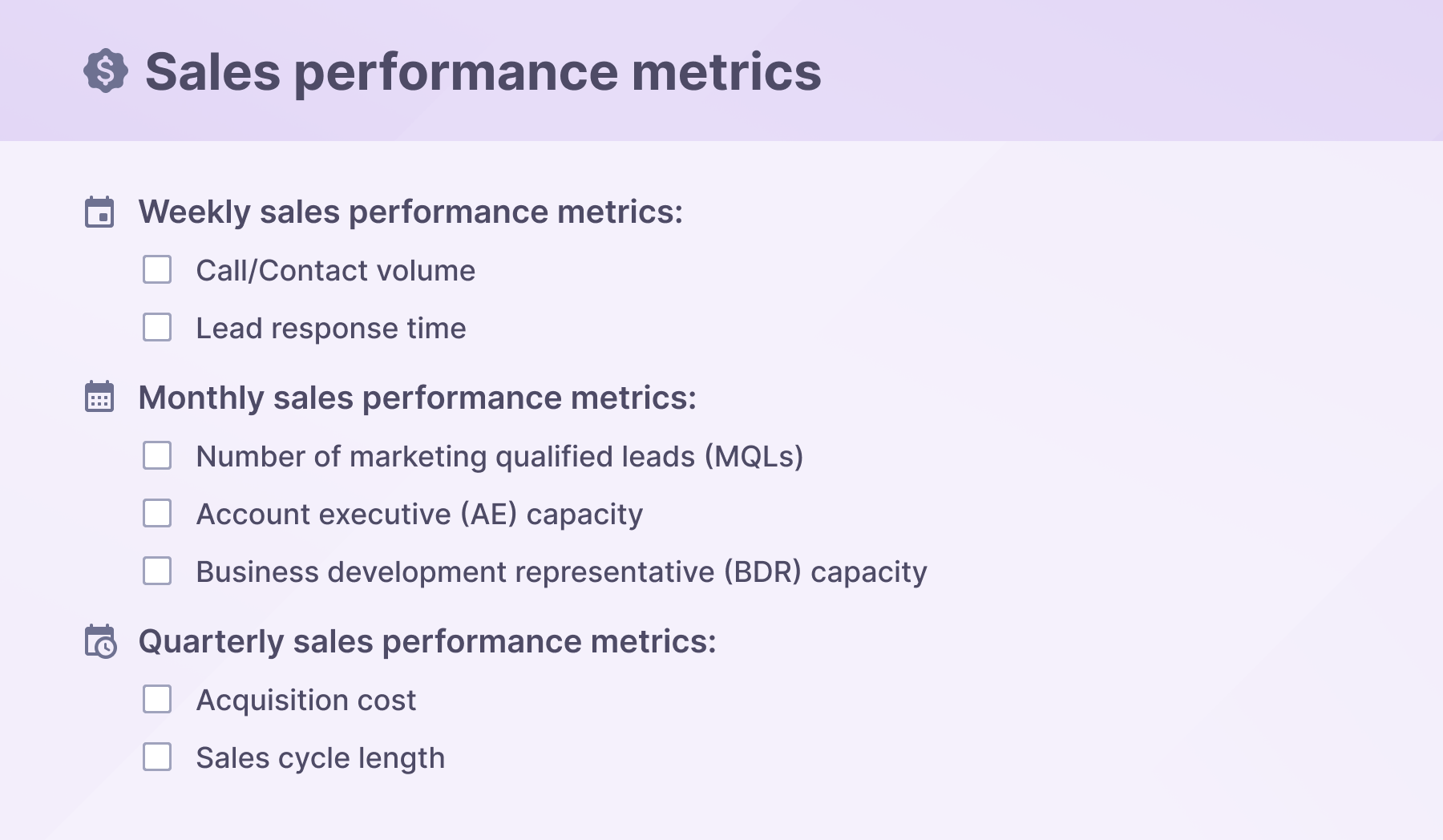
Master the sales pipeline stages for growth
The sales pipeline stages provide a clear roadmap for your sales activities, from prospecting to closing the deal. Each stage serves to move leads through the pipeline.
Learn how to use these sales pipeline stages for a well-organized and effective sales process. Stay focused, adapt to customer needs, and optimize your approach to maximize your sales and business growth in 2024.
Frequently Asked Questions (FAQs)
The two stages that truly determine success are negotiation/commitment and closing the deal. They involve final discussions to agree on terms and the official confirmation of the sale.
The best structure reflects your actual sales cycle.
Begin by identifying leads and qualifying them, followed by a pitch or demo, proposal, and negotiation. Use clear criteria to advance leads through each stage.
Regularly review your pipeline with your team to update it based on performance patterns.
A pipeline begins with lead generation, continues through qualification, moves into conversations and offers, and ends either in a sale or a lost opportunity.
After closing, there’s still a phase of follow-up and relationship-building, especially for repeat business or referrals.
Progression describes how well your leads move from one phase of the sales pipeline to the next.
It measures how active your pipeline is and whether your deals are advancing at a healthy pace or getting stuck.
Related articles
Maximizing SMS marketing impact with Unified Communications as a Service (UCaaS)
SMS messaging has long been a top marketing strategy...
Text message errors: Why SMS delivery fails and how to fix it
You know that moment when you hit “send”...
7 Rules to follow when sending birthday text messages to your customers and employees
Sending customers and employees a text on their birt...
7 Ways small teams stay organized and responsive with Textmagic
If you run a small business, you’re probably j...
5 Easy Pipedrive SMS integrations with Textmagic and Zapier
Pipedrive is a CRM software for businesses of all si...




